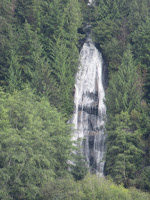And now this adventure is done.
There will be other adventures; we still feel nomadic, and at the very least a cross country camping trip to see new places and old friends is on a future calendar. Replanting ourselves in Ashland after such a long absence will keep us busy. But once Second Wind has been spruced up and sold, this chapter of our lives will forever be closed.
What do we see when we look back?
Images, of course: jewel-toned lagoons, spewing volcanoes, calving glaciers. The sounds of New Zealand songbirds, water rushing by the hull on passages, islanders singing while they work. The emotional power of witnessing Polynesian dancing and Maori music and multiple planets aligned across the night sky. Close encounters with multicolored fish, sparkling glowworms, magnificent whales. And above all, time in small villages, sharing music and meals.
We've been asked how we have changed. We're not sure we actually changed all that much, though we definitely know ourselves and each other better. Perhaps it's more a matter of having opportunities to practice being who we wanted to be all along. We learned to be much more flexible; circumstances were always changing, so adapting became a way of life. We had seemingly endless opportunities to practice patience, some of which were more successful than others. We did well with the tenacity bit, though! Which goes with the realization that we--all of us--are capable of doing whatever it is that we have to do.
We experienced the pleasure of being truly focused. Living in the moment was palpable, not just a catchphrase. We learned to do what we could when we had the chance, since more often than not if we passed up an opportunity, something--usually weather--prevented us from getting to do what we'd planned to do. We felt the inverse relationship between time and stress: the more time, the less stress (and vice versa). All these are principles we knew before we left, but now we know them much more deeply.
So what do we feel when we look back? Gratitude. Contentment. Awe.
This is our final blog post. If you would like to stay connected, please feel free to contact us directly. We would love to hear from you!
Last but not least, THANK YOU for following us! It always meant so much to know that others cared about our journey.


































































